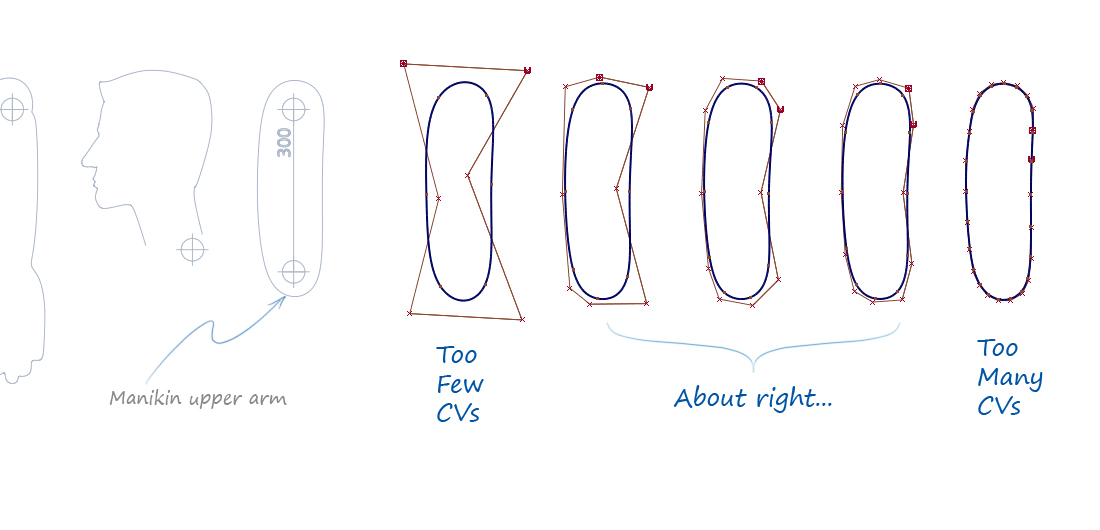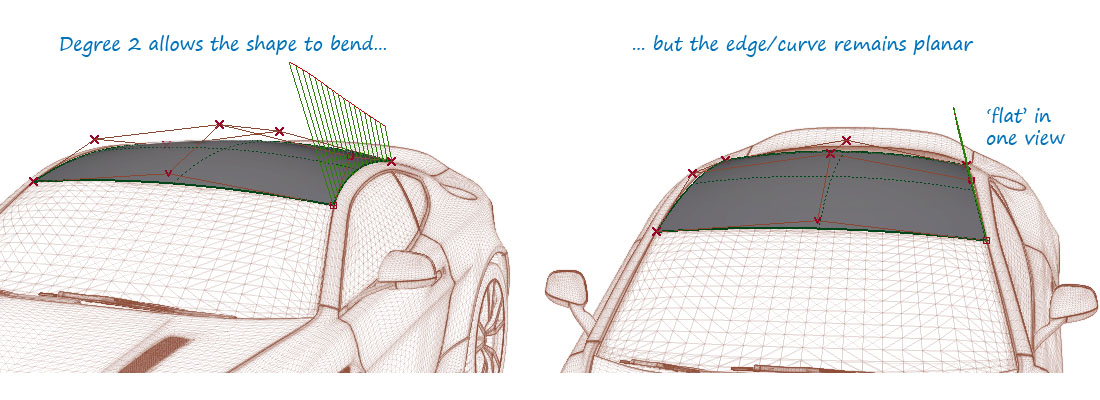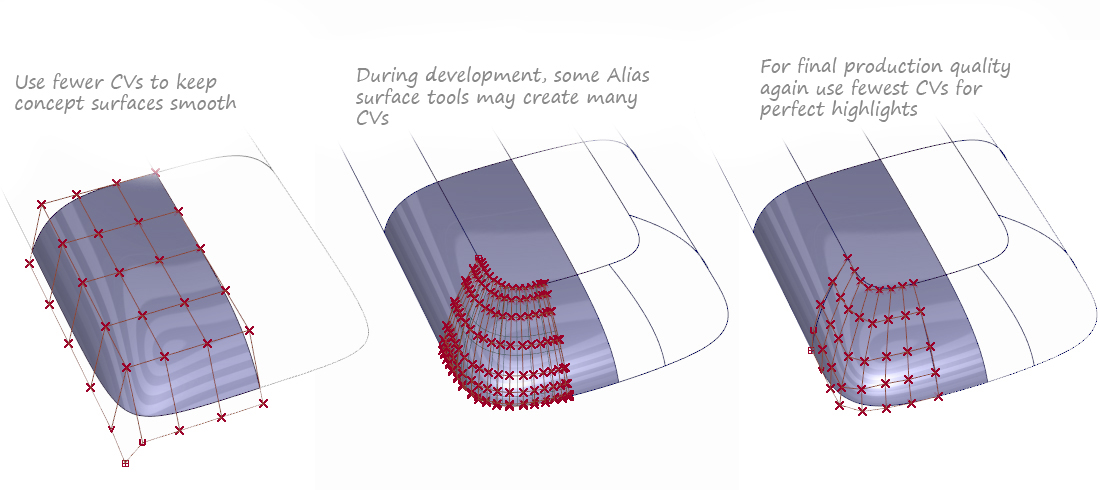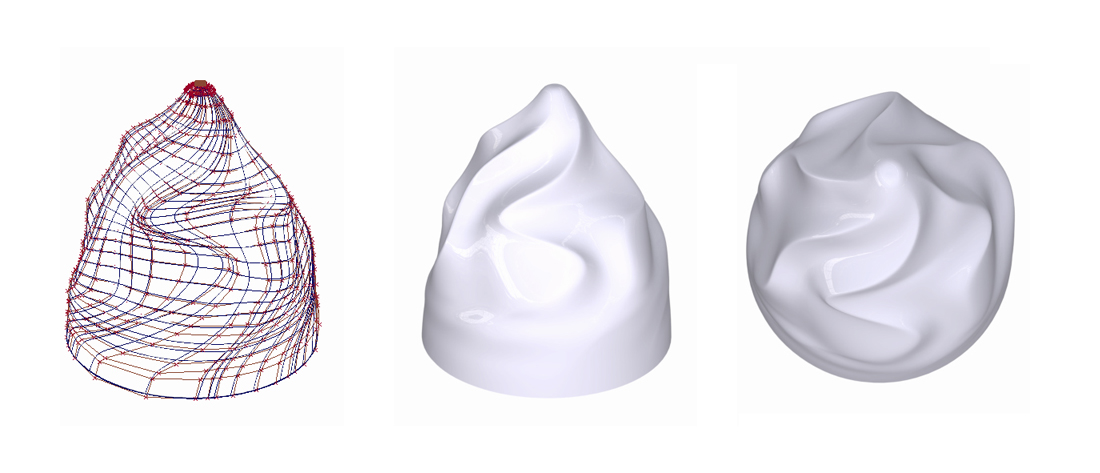GR4 Fewer CVs Further Information...
How to recognise when you have too few or too many CVs
Each CV should 'have a job to do' - each CV should be instrumental in bending and shaping the curve.
- Too many: If the CV's just seem to be maintaining the shape rather than influencing it - you may have too many CVs. Another indication is when you move one CV, and then have to compensate by moving the CVs around it to maintain the shape you want.
- Too few: If you have to pull your CVs into extreme positions to achieve your shape, then it is usually better to allow one or two extra CVs to achieve the shape without too much strain.

Degree 2, Single-Span
A single-span degree 2 curve (or surface edge) is special in that it is planar. It cannot twist in 3D space, so however you move the CVs, it will remain in flat plane. This is useful when you are trying to maintain stiffness and discipline on key feature lines.

You would need to increase to degree 3 in order to allow the curve to twist in 3D space.
Breaking the Rule 1
Some Alias surfacing tools will create many CVs when fitting a surface.
In many situations, the mathematics of the tool will ensure a smooth and good surface, but this should always be checked as the extra CVs allow the possibility of 'wobbles' in the surface.

Breaking the Rule 2
If you want to build a large area of your model from a single surface, then you may need many CVs to be able to create surface detail.
This is a powerful, quick modelling technique, made possible by using multi-span curves and surfaces. To use it well, you will need to have good control over the CV positioning - a skill you will need to practice.
For designs like this plastic food packaging cap, it achieves a result that would be almost impossible with separate surface patches, and as it is a low-cost product, then the fact that the surface isn't taut or perfectly smooth isn't a problem.

It is possible to apply this approach to concept modelling for vehicle design, but it requires a lot of skill manipulating the CVs and is an unusual approach. Also you need to recognise that the surfaces won't be smooth enough or controlled enough for production.
This example uses a single, multi-span surface to create the whole exterior design:
